生物刺激素市场规模预计将从2024年的55.5亿美元增至2031年的84.1亿美元。预计2025年至2031年期间,该市场的复合年增长率将达到6.3%。生物刺激素开发领域的技术进步预计将在预测期内创造新的市场趋势。
生物刺激素市场分析
由于向有机农业转型以及生物刺激素与化肥的结合,生物刺激素越来越受欢迎。它们作为植物生长刺激剂广受欢迎,有助于增强根系生物量、养分吸收和酶活性。这促使主要参与者大幅提高生产能力。富含矿物质、植物激素和氨基酸的生物刺激素鼓励农民选择此类产品。生物刺激素是一种能够改善植物营养过程的产品,与植物的营养成分无关。这些生物刺激素可以用作腐殖质、氨基酸、微生物刺激素、海藻提取物等。它们可用于谷物、油籽和豆类、水果和蔬菜、草坪和景观等。
生物刺激素市场概览
生物刺激素是由多种物质或微生物组成的混合物,有助于改善作物生长,且不会对环境造成任何负面影响。多项研究表明,生物刺激素可作为肥料添加剂,从而减少肥料使用量。它们还能促进养分吸收、植物生长和抵抗非生物胁迫。它支持植物的代谢过程,帮助吸收必需的养分。生物刺激素的施用方法多种多样。生物刺激素可以以粉末、颗粒或用于土壤准备的液体叶面肥的形式使用。全球生物刺激素市场根据产品、施用方式和作物类型进行细分。
定制此报告以满足您的要求
您可以免费定制任何报告,包括本报告的部分内容、国家级分析、Excel 数据包,以及为初创企业和大学提供优惠和折扣
生物刺激素市场:战略洞察

- 获取此报告的顶级关键市场趋势。此免费样品将包括数据分析,从市场趋势到估计和预测。
生物刺激素市场驱动因素和机遇
有利的政府政策和举措
欧盟通过监管框架支持生物刺激素的应用,以确保其在农业中的安全有效使用。欧盟已建立清晰的监管框架来管理生物刺激素的使用。欧盟法规1107/2009(涵盖植物保护产品)和最新的关于生物刺激素的法规(欧盟)2019/1009号为生物刺激素产品提供了明确的指导方针,确保了其安全性和有效性。这种清晰的监管鼓励了欧洲各地农民更广泛地使用生物刺激素。此外,《欧洲绿色协议》及其“从农场到餐桌”战略优先考虑提高资源效率、发展清洁循环经济、恢复生物多样性和减少污染。这一朝着可持续发展目标迈进的举措推动了对包括生物刺激素在内的环保农产品的需求,以实现到2050年将欧洲定位为第一个气候中和地区的目标。
此外,补贴、补助和税收优惠政策鼓励农民采用环保的替代种植方式,而印度的“农业转型计划”(PKVY)和美国农业部的“有机转型倡议”等国家级项目也支持有机农业,间接刺激了生物刺激素的需求。各国政府还资助生物基农业解决方案的研发,进一步加速了行业增长和农民意识的提升。这些政策与全球可持续发展目标相契合,强化了生物刺激素作为气候智能型农业关键工具的地位。
生物刺激素与化肥的整合
大量使用化肥已经对水体造成了影响。营养物质从农场被冲刷到附近的河流、湖泊和池塘,造成水体富营养化。此外,化肥的利用效率低下,这意味着植物只能吸收肥料中的混合营养。例如,磷等必需营养物质在施入土壤后会沉淀下来,因此植物可利用的量较少。此外,另一种必需营养物质氮也可能由于硝酸盐淋失等因素而无法被植物吸收。
将生物刺激素与化肥相结合,可以实现可持续的资源管理,因为它有助于优化养分吸收,促进作物健康生长,并可能减少对合成肥料投入的依赖。这种策略还可以减少化肥过量使用造成的环境污染。虽然与某些传统化肥相比,生物刺激素产品可能需要更高的前期投资,但其农艺和经济优势(例如更高的产量和更高的农民利润)可以带来长期的丰厚投资回报。例如,《意大利农学杂志》发表的一项关于硬粒小麦的研究表明,施用生物刺激素可以显著提高关键的形态生理参数和谷物产量,同时有可能减少对合成氮肥的依赖。因此,上述优势可能会促进对生物刺激素的依赖,并进而推动未来几年生物刺激素市场的扩张。
生物刺激素市场报告细分分析
有助于得出生物刺激素市场分析的关键部分是产品类型、应用方式和作物类型。
- 根据产品类型,生物刺激素市场细分为腐殖质、氨基酸、微生物刺激素、海藻提取物等。2024年,海藻提取物占据了全球生物刺激素市场的最大份额。
- 根据应用方式,生物刺激素市场分为叶面喷雾、种子处理和土壤施用。2024年,叶面喷雾占据了生物刺激素市场的最大份额。
- 就作物类型而言,生物刺激素市场细分为谷物和谷类作物、油籽和豆类作物、水果和蔬菜作物、草坪和园林作物以及其他作物。2024年,谷物和谷类作物占据了生物刺激素市场的最大份额。
生物刺激素市场份额地域分析
生物刺激素市场报告的地理范围分为五个区域:北美、亚太、欧洲、中东和非洲以及南美和中美。预计亚太地区的生物刺激素市场在预测期内将大幅增长。
亚太地区的生物刺激素市场因农民意识的增强以及人口增长带来的粮食需求的增加而显得尤为突出。农产品需求的增长以及对有机农产品日益增长的需求预计将推动亚太地区,尤其是中国、日本和印度的生物刺激素消费。鉴于这些亚洲国家农业部门竞争激烈且不断发展,其产品消费率较高。亚太各国的制造商正在开发高效低毒的独特产品。例如,2021年,总部位于印度班加罗尔的初创公司Sea6 Energy获得了该国首个生物刺激素产品专利。该公司还拥有许多源自红藻的独家产品。
随着消费者越来越意识到饮食对健康的益处,有机食品的受欢迎程度也随之飙升。这种意识促使人们越来越多地使用有机肥料,取代严重依赖化肥的传统耕作方法。生物刺激素在提高营养效率和增强非生物胁迫耐受性方面发挥着至关重要的作用。因此,有机农业对生物刺激素的需求预计将推动该地区的市场发展。
生物刺激素市场区域洞察
Insight Partners 的分析师已详尽阐述了预测期内影响生物刺激素市场的区域趋势和因素。本节还讨论了北美、欧洲、亚太地区、中东和非洲以及南美和中美洲的生物刺激素市场细分和地域分布。
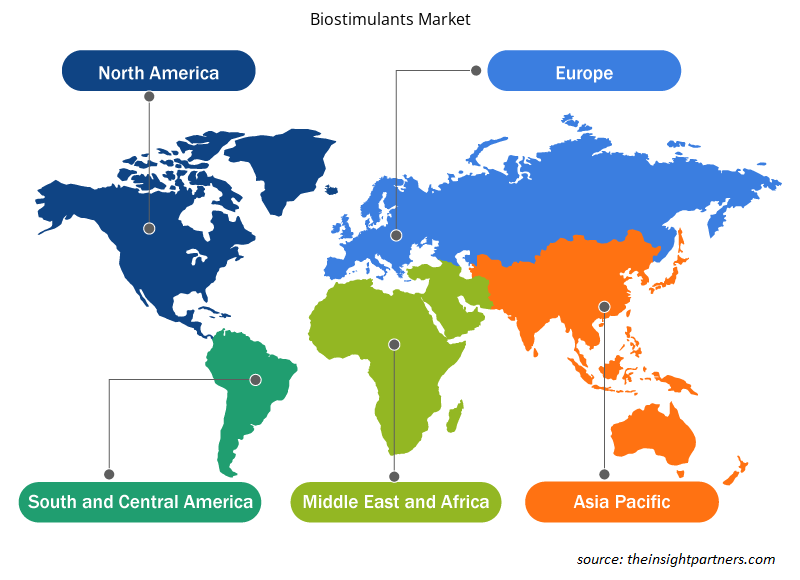
- 获取生物刺激素市场的区域特定数据
生物刺激素市场报告范围
| 报告属性 | 细节 |
|---|---|
| 2024年的市场规模 | 55亿美元 |
| 2031年的市场规模 | 84.1亿美元 |
| 全球复合年增长率(2025-2031) | 6.3% |
| 史料 | 2021-2023 |
| 预测期 | 2025-2031 |
| 涵盖的领域 | 按产品类型
|
| 覆盖地区和国家 | 北美
|
| 市场领导者和主要公司简介 |
|
生物刺激素市场参与者密度:了解其对商业动态的影响
生物刺激素市场正在快速增长,这得益于终端用户需求的不断增长,而这些需求的驱动因素包括消费者偏好的转变、技术进步以及对产品益处的认知度的提升。随着需求的增长,企业正在扩展产品线,不断创新以满足消费者需求,并抓住新兴趋势,从而进一步推动市场增长。
市场参与者密度是指特定市场或行业内企业或公司的分布情况。它表明特定市场空间内竞争对手(市场参与者)的数量相对于其规模或总市值而言。
在生物刺激素市场运营的主要公司有:
- 巴斯夫
- 联合磷化有限公司
- 瓦拉格罗
- 高恩公司
- FMC公司
- ILSA SpA
免责声明:以上列出的公司没有按照任何特定顺序排列。
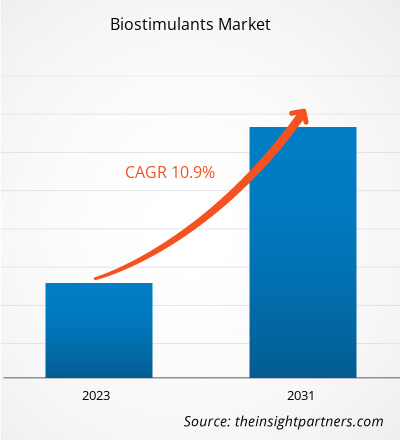
- 获取生物刺激素市场主要参与者概览
生物刺激素市场新闻及最新发展
生物刺激素市场评估是通过收集一手和二手资料后进行的定性和定量数据进行评估的,这些数据包括重要的企业出版物、协会数据和数据库。生物刺激素市场的一些关键发展如下:
- UPL AgroSolutions Canada 已获得加拿大食品检验局的注册,并在加拿大推出了其 Wave 生物刺激素。(来源:UPL Ltd,新闻稿,2023 年 1 月)
- IntraCrop 的生物刺激素技术被刊登在《国家地理》捷克版上,该技术被证明可在减少化肥使用的情况下使作物产量提高高达 15%。(来源:IntraCrop 新闻稿,2024 年 11 月)
生物刺激素市场报告覆盖范围和交付成果
《生物刺激素市场规模和预测(2021-2031)》报告对以下领域进行了详细的市场分析:
- 生物刺激素市场规模以及全球、区域和国家层面涵盖的所有主要细分市场的预测
- 生物刺激素市场趋势以及市场动态,例如驱动因素、限制因素和关键机遇
- 详细的波特五力模型和 SWOT 分析
- 生物刺激素市场分析涵盖主要市场趋势、全球和区域框架、主要参与者、法规和最新市场发展
- 行业格局和竞争分析,涵盖市场集中度、热图分析、知名参与者以及生物刺激素市场的最新发展
- 详细的公司简介
- 历史分析(2 年)、基准年、预测(7 年)及复合年增长率
- PEST和SWOT分析
- 市场规模、价值/数量 - 全球、区域、国家
- 行业和竞争格局
- Excel 数据集
近期报告
相关报告
客户评价
购买理由
- 明智的决策
- 了解市场动态
- 竞争分析
- 客户洞察
- 市场预测
- 风险规避
- 战略规划
- 投资论证
- 识别新兴市场
- 优化营销策略
- 提升运营效率
- 顺应监管趋势












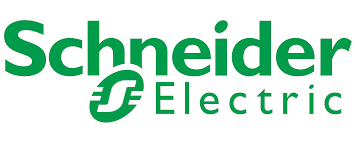


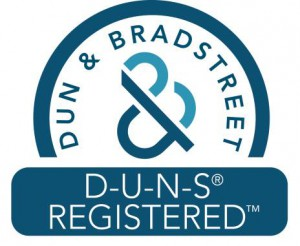
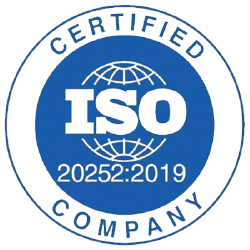



 获取免费样品 - 生物刺激素市场
获取免费样品 - 生物刺激素市场